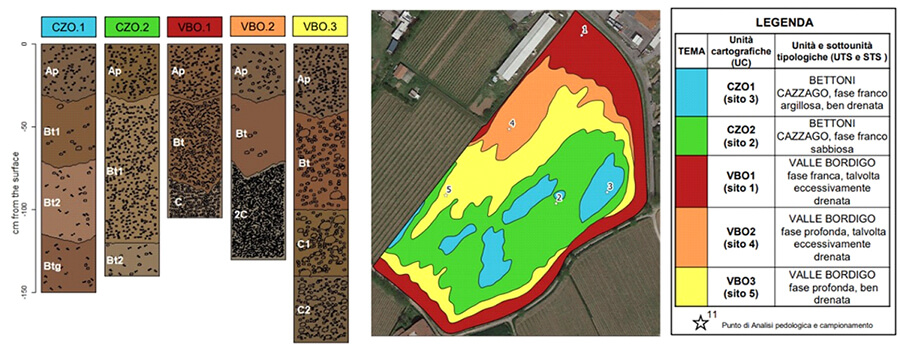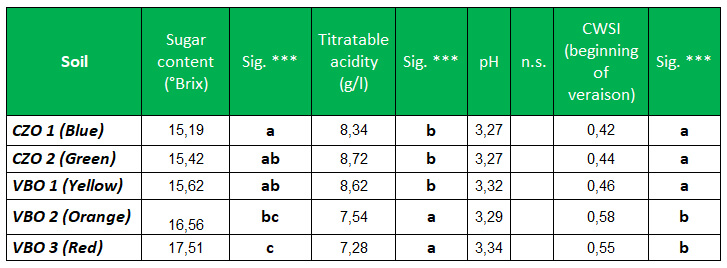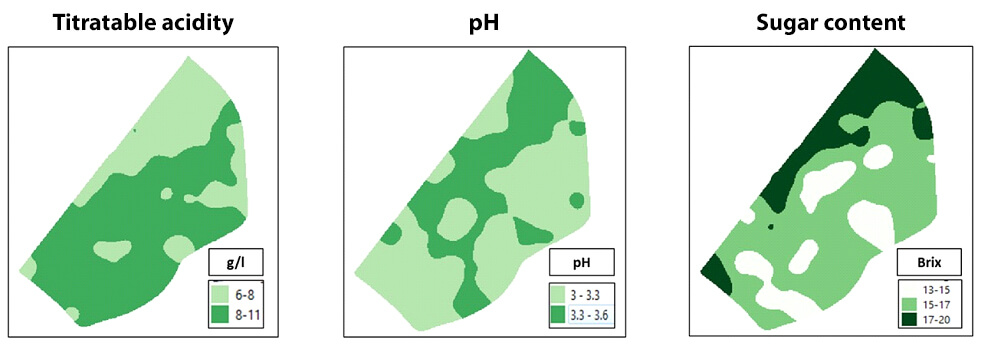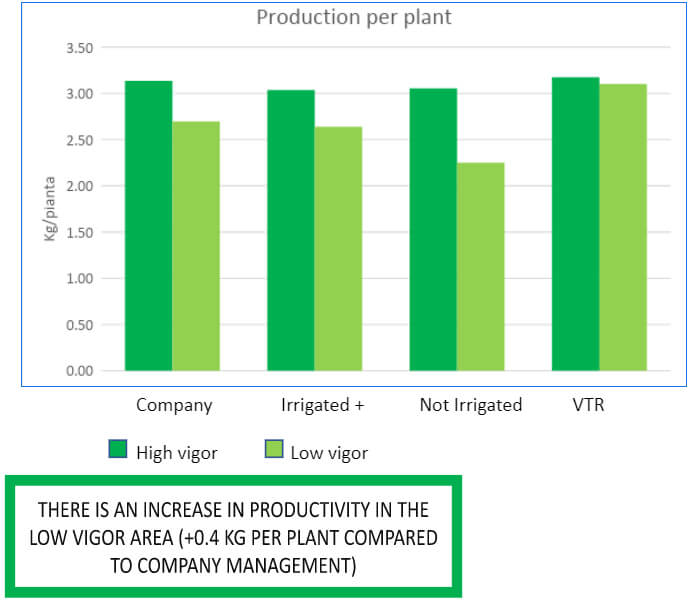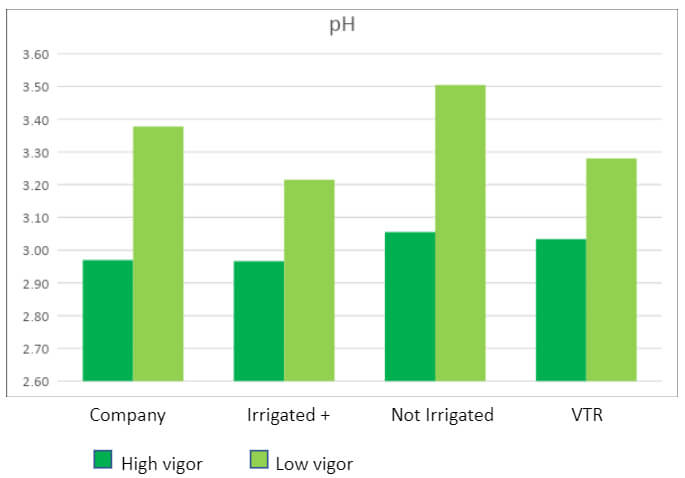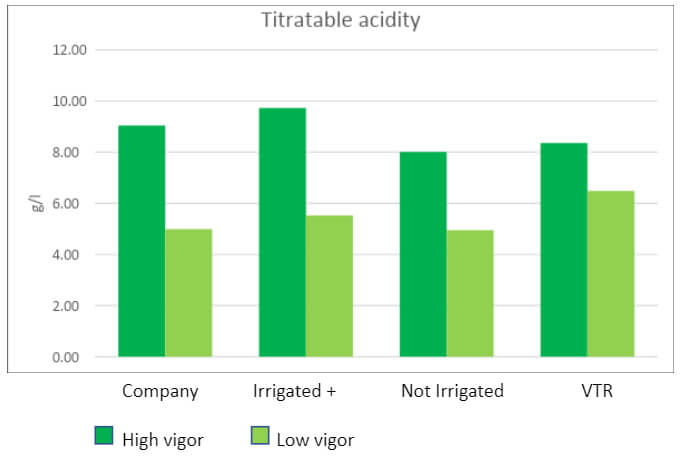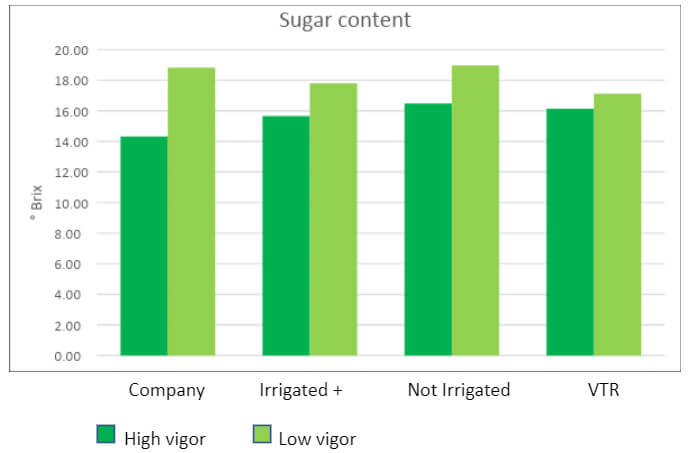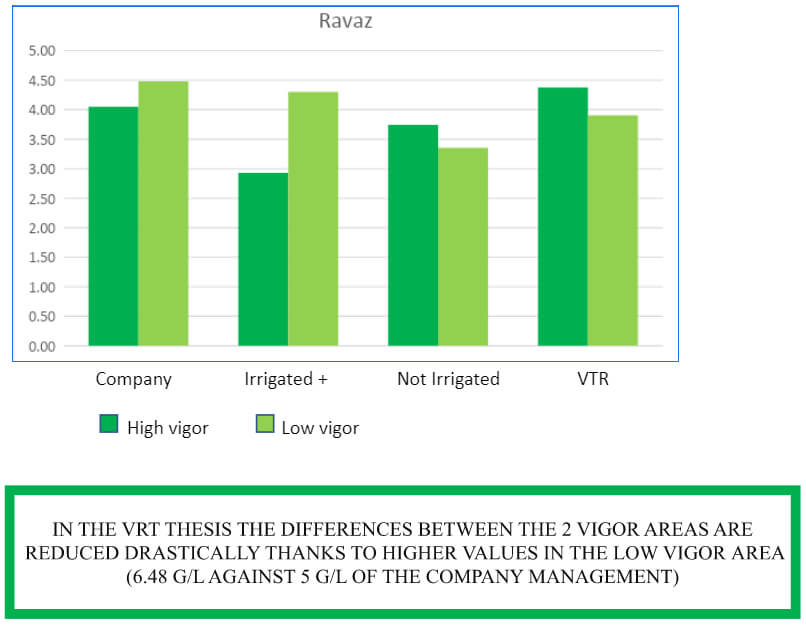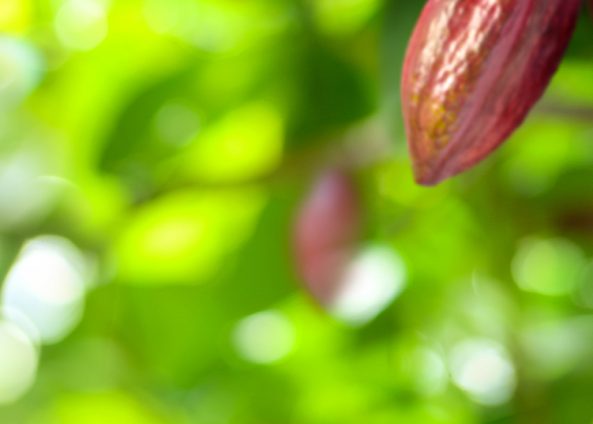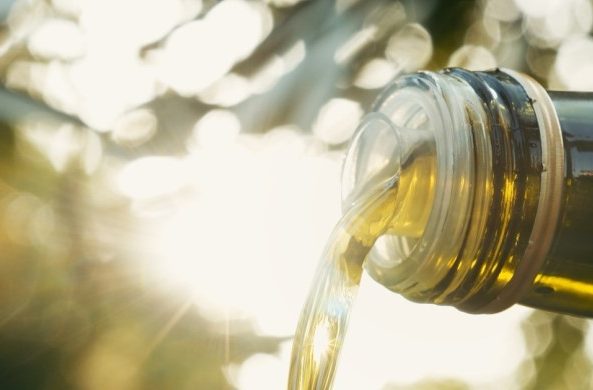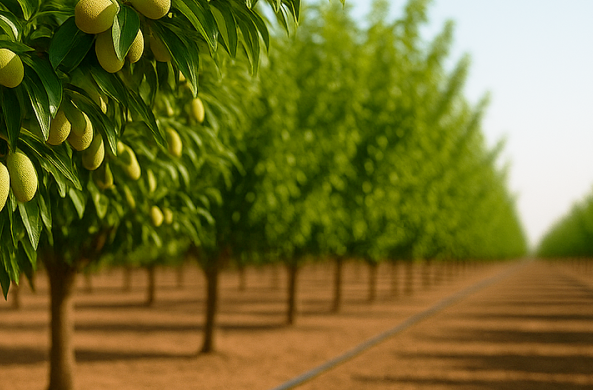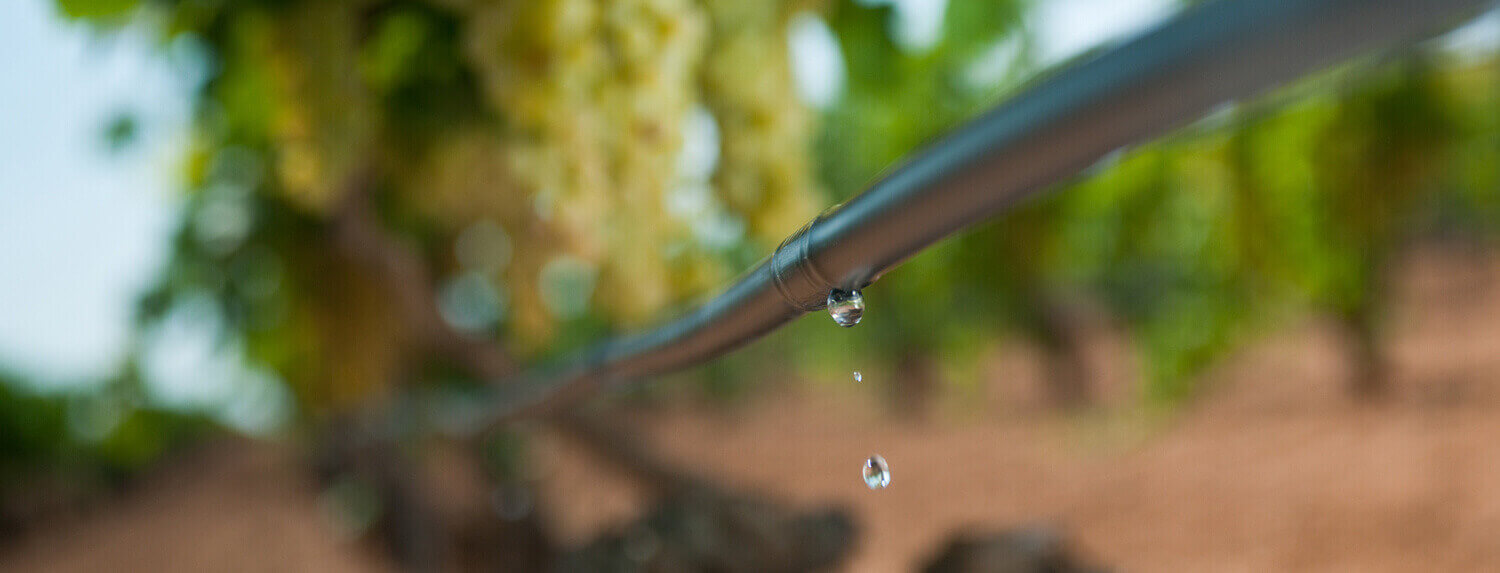
Precision irrigation models | ensuring optimal water management
The correct application of precision irrigation models allows the achievement of production and quality targets, even in the most difficult seasons, while ensuring optimal water management.
Experimental tests of irrigation at variable rates and with DSS (Decision Support System) in Franciacorta in 2020-2021 showed a water saving of 17% with precision irrigation.
Vineyard irrigation is an increasing topic in European viticulture. In fact, the uncertain forecasts on the extent and impact of climate change, will mean that future scenarios will be far different from the actual ones. A different rainfall pattern and the increase in temperatures seems destined, in different wine-growing areas, to increase the phenomena of severe water stress, with inevitable repercussions on the yield and quality of the grapes, on the style and personality of the wines and in the most extreme cases, on the viticultural potential of the territories. To cope with this new situation, now foreseen in several studies, winemakers can count on different strategies to be adopted depending on the time frame considered and the intensity of the expected water stress (Figure 1).
Figure 1 : DIFFERENT STRATEGIES FOR THE ADAPTATION OF VITICULTURE TO CLIMATE CHANGE
Author: Quenol et al. (2016) – Adapting viticulture to climate change.
Among these, irrigation is a long-term solution suitable to answer high water stress, allowing vineyards to reduce the dependence on weather conditions that are constantly changing, and to achieve quality and production standards even in the most difficult years. However, if irrigation has spread widely in New World viticulture, it’s not the same in Europe, where in most wine-growing regions it is a very recently introduced technique. Thus, new specific protocols for the design and management of irrigation systems suitable for the typical characteristics of each production area need to be defined soon, but at the same time they must be focused on the optimization of water, both for the scarcity of the resource and for the repercussions managing it has on the quality of the grapes.
The field test within the Virecli project (see box) on precision irrigation provides a solution to this precise need.
The Virecli Project aims to experiment and implement precision farming techniques to regulate the vegetative-productive balance, to protect the soil and more generally to promote the adaptation of viticulture to climate change. Irrigation is one of the main issues. The project, funded by the Lombardy Region under the Rural Development Plan, involves researchers from the University of Milan, the Piacenza Cattolica and the University of Pavia. The wineries, which host the trials as active partners of the project, are located between Franciacorta (Ferghettina, Castello di Gussago La Santissima, Vezzoli Giuseppe) and Oltrepò Pavese (Conte Vistarino, Tenute Tonalini).
THE DECISION SUPPORT SYSTEM FOR PRECISION IRRIGATION
During the test one of the two decision support systems (DSS) used is Manna. A system developed by Rivulis based on frequently updated high resolution satellite data. These, combined with information on highly localized weather conditions, allow site-specific irrigation advice. The system also allows to receive NDVI periodic maps and the soil water status, always based on satellite data.
THE EXPERIMENTAL TEST
The experimental test was set up in a 4.5-hectare Franciacorta vineyard (cv Chardonnay) owned by the Ferghettina farm, where different irrigation methods are compared, always managed in compliance with the production regulations.
In detail, these are the 4 theses: (figure 2)
- Variable rate drip irrigation system, designed considering the variability of the plants water needs within the plot and managed according to experimental protocol, with the aid of decision support systems; (VRT)
- Drip irrigation system already there, but managed according to experimental protocol, with the aid of decision support systems; (I +)
- Drip irrigation system already there and managed according to company protocol; (AZ)
- Non-irrigation control. (NI)
Figure 2 : POSITIONING OF THE 4 THESES IN THE VINEYARD AND CHARACTERISTICS OF THE IRRIGATION SYSTEM
DESIGN OF THE IRRIGATION SYSTEM
During the first year of the test, (2020) the work was focused on the design of the irrigation system. Especially, an accurate analysis of the soil characteristics and their variability within the vineyard was conducted. This was possible through the application of the latest geophysical techniques based on the acquisition of electrical resistivity. In fact, this magnitude is strongly linked to the main physical-chemical parameters of the soil and its interpretation brings to divide the vineyard into five homogeneous zones, with uniform hydrological soil properties. (Figure 3)
Figure 3 : DISTRIBUTION OF THE 5 CARTOGRAPHIC UNITS IDENTIFIED INSIDE THE VINEYARD (RIGHT) AND GRAPHIC REPRESENTATION OF THE PROFILE (LEFT)
The white letters in the soil profiles on the left refer to the pedological horizons.
The vineyard can be divided into two macro-areas: one less subject to water stress (zone 1, corresponding on the map to the units in yellow, green and blue) and one potentially more exposed. (zone 2, units in red and orange)
Each homogeneous area was finally characterized through a pedological analysis, which highlighted how soils with different texture, depth and capacity to store water coexist within the vineyard. Two of these showed poorly structured and shallower profiles, (in the map in red and orange) sometimes resulting in excessive drainage, exposing the plants to a greater risk of water stress.
The subsequent measurements done during the growing season made it possible to evaluate the different plants response in each soil unit, (table 1 and figure 4) highlighting statistically significant differences both in terms of the water status of the plants and in the qualitative parameters of the musts at harvest. In the more draining soils, the water stress was higher than in the others, while at harvest the musts were characterized by a higher sugar content and lower acidity. The NDVI drone relief allowed researchers to identify two areas of vigor corresponding to the soil units. The analysis of all these data allowed us to split the vineyard into two macro-areas: one less subject to water stress phenomena (zone 1, corresponding on the map to the units in yellow, green and blue) and one potentially more exposed. (zone 2, units in red and orange)
Table 1 : QUALITY PARAMETERS OF GRAPES AT HARVEST AND CWSI INDEX (CROP WATER STRESS INDEX) DETECTED IN THE DIFFERENT CARTOGRAPHY UNITS
See figure 3. Data referred to the 2020 season. Significance according to the univariate ANOVA test and the Duncan test *** p <0.001; n.s. = not significant; different letters indicate statistically significant differences.
Figure 4 : DISTRIBUTION OF SOME QUALITY MUSTS PARAMETERS WITHIN THE VINEYARD
Data referred to the 2020 season
Supported by the preliminary data collected, the design of the variable rate drip irrigation system predicted the creation of two areas, perpendicular to the rows and created through the laying of a single dripline characterized by different spacing between the drippers, higher in the VRT1 zone (high vigor) and lower in the VRT2 zone. (low vigor) This solution was adopted by applying dripper outlet plugs – Hydro clips – on the drippers, to close them and modulate their spacing. In this way, each irrigation schedule distributes less water in the first area than in the second, satisfying the different water needs of the plants, due to the different characteristics of the soils.
The dripline used, the Rivulis Hydro PC, is Pressure-Compensating (PC). A system capable to ensure the same flow rate per dripper regardless of what the pressure is. (within the recommended pressure range) This ensures the uniform distribution of water and nutrients since at a given pressure all the drippers have the same defined flow rate even on undulating terrain or with long run lengths. Its cylindrical dripper with 2 water outlets in every dripper also guarantees lasting quality and high clog resistance.
IRRIGATION MANAGEMENT: THE RESULTS OF THE FIRST YEAR
After the preliminary study and installation of the irrigation system conducted in 2020, in 2021 the test went live with the comparison of the different theses. For the management of VRT and I + thesis, the protocol was based on the use of two decision support systems (DSS), calibrated and validated during the season through a series of physiological measurements on the plants. (leaf water potential before dawn; photosynthetic activity; CWSI – Crop water stress index) We also used some soil moisture probes placed at strategic points of the vineyard and a weather station. At harvest, in each thesis and in each area, the data of ten plants were collected, recording both the vegetative-productive parameters and those relating to technological maturity.
The first interesting data certainly concerns the irrigation volumes used. The variable rate management of irrigation has allowed a water saving of 17% (weighted average) compared to the company standard. It is also interesting to note that this figure is the result of a 28% increase in irrigation volumes in the low vigor (VRT2) accompanied by a 36% reduction in the high vigor, (VRT1) better satisfying the needs of the plant. Against this saving, the production and qualitative results do not show any significant differences compared to other irrigation systems. In addition, in the VRT thesis there is a general tendency to smooth out the differences between areas with different vigor. This greater homogeneity is evident in the production per vine, thanks to an increase in productivity in the low vigor area, (+0.4 kg / plant compared to company management) but also in the qualitative aspects of the musts. In fact, regarding acidity, a fundamental parameter for a spumante base, in the VRT thesis the differences between the two areas of vigor are drastically reduced thanks to higher values in the low vigor area, (6.48 g / L against 5 g / L of company management) with a gap thus reduced to less than 2 g/L, against 5 g/L of the other thesis. The same trend is also recorded for the pH and the sugar content of the musts. Also in the latter case, the differences were almost eliminated in the VRT, (1 ° Brix) while they are important in the other theses, reaching up to 3 degrees of potential alcohol. (graphs from 1 to 6).
Graph 1 : PRODUCTION PER PLANT AT HARVEST (2021)
Graph 2 : PH AT HARVEST (2021)
Graph 3 : TITRATABLE ACIDITY AT HARVEST (2021)
Graph 4 : SUGAR CONTENT AT HARVEST (2021)
Graph 5 : RAVAZ INDEX (RATIO BETWEEN GRAPES PRODUCED AND PRUNING WOOD) (2021)
IRRIGATION AND QUALITY
The correct application of precision irrigation models allows the achievement of production and quality objectives, even in the most difficult seasons, while ensuring optimal water usage.
Furthermore, in vineyards with spatial variability of the pedological and topographical characteristics it can be a valid tool for homogenizing productions, making them converge towards consistent levels with the pre-established oenological objectives. In this way it is possible to reach optimal yield levels and fruit quality even in the areas potentially most exposed to water stress.
Rivulis, thanks to their experience and passion for irrigation of over 50 years, has proved to be the ideal partner to better manage the quality of the grapes and ensure more uniform production, thanks to the irrigation system used and the Manna software capable of identifying the right moment and the correct amount of water to distribute.
Stefania De Pirro
Davide Modina
Lucio Brancadoro




